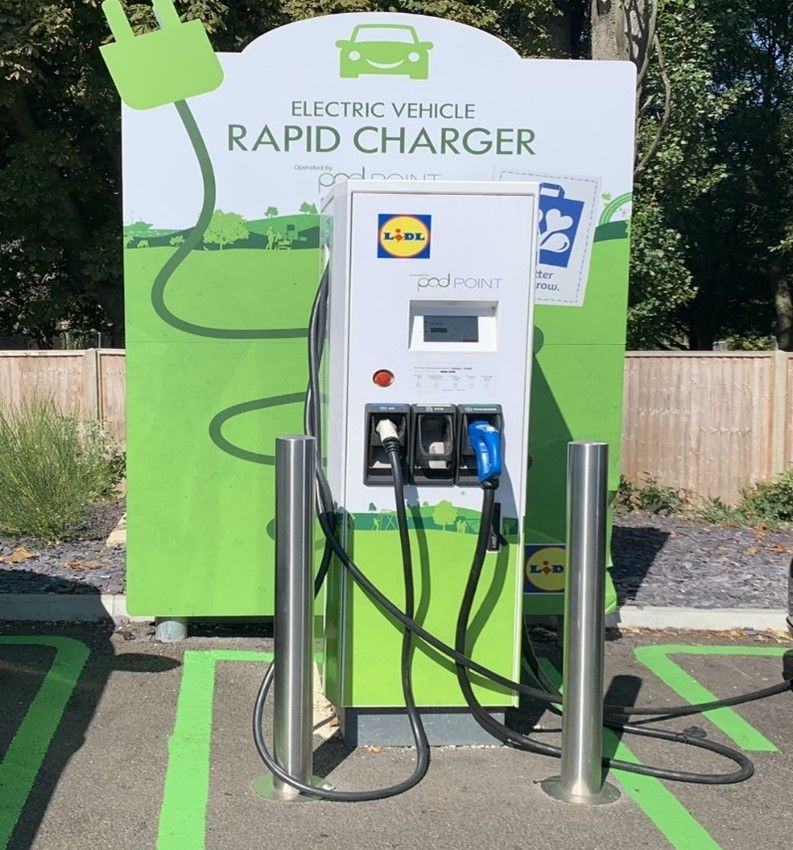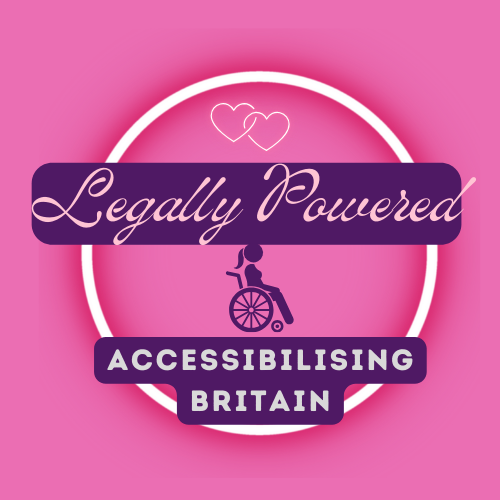“Consistency & transparency” The trials of inaccessible EV public chargers
Tammy faces various challenges at electric charging stations and in this article, she discusses why – And what she feels needs to be done to make them accessible for all!

Walking up to an EV charging point Tammy Scott, 28, from Berkshire is faced with her first problem…. Which app service does this station use and has she used it before? After finding out she has to sign up to another app for the third time this month here comes her second problem…. Can she validate her sign-up without getting distracted by the other 20 emails she has and totally forgetting she has to charge her car and driving off without topping up!
In 2022 Tammy treated herself to a brand new, blue, electric mini. Excited about the prospect of lowering her petrol bill; she couldn’t see the downside of owning an electric vehicle. That was until she was faced with charging her car at a public charging station.
The mileage range of the car was 160 miles, so she was aware of the need to use public chargers but the inaccessibility she encountered, was unexpected.
As well as being diagnosed with dyslexia and dyspraxia, Tammy is one of approximately 1.8 million adults with ADHD in the UK, (according to the Office of National Statistics), which can mean her attention span is much shorter than another adult.
The effect these conditions have on her day-to-day living she describes as ‘organisational difficulties, time-blindness, and the inability of seeing the steps involved in things’.
With electric cars it is not as easy as seeing the petrol needle getting low, looking for the nearest station and pulling in. It takes planning.
A two-hour journey suddenly has an extra 45 minutes added – 30 minutes to charge the car and 15 minutes to work out how the charger works! This extra time Tammy has included in her journey, what she has not foreseen is the other four cars waiting, all taking 30 minutes plus to charge. Tammy explains: “This feeds into my time-blindness as I’ve not planned enough time into doing that”.
“This feeds into my time-blindness as I’ve not planned enough time into doing that”.
For people with disabilities this causes stress and anxiety, a missed appointment, additional tiredness, and worry, trying to plan medication around charging the car.
Pulling up to the electric charger – Tammy has to think…. which way does this station work? Have I already got the app… Tammy notices that this charger is different to the ones she had visited before and it’s asking her to sign up to their app.
Tammy explains: “It can hurt my brain if I have to sign up for something and then go into my email to confirm and then go back to the app – flicking between numerous tasks is really hard when you’ve got ADHD – you get really distracted”.
“It can hurt my brain if I have to sign up for something and then go into my email to confirm
and then go back to the app – flicking between numerous tasks is
really hard when you’ve got ADHD – you get really distracted”.
It is not just the signing up to a different app each time that causes issues, payment for the chargers causes confusion too.
Tammy says: “It’s a nightmare as there’s no consistent way that every company does it. Some make you sign up and pay via the app, some you tap your contactless card and others you have a charging account”.
Not only is the way you pay inconsistent but so is the way the chargers work. Some you have to pre-authorise your card then attach the charger, others it is the other way round which can be confusing to anyone.
For dyslexics, the elderly or people who are not good with technology, trying to work out how to use the chargers is testing. Tammy informed me, people waiting for chargers could get frustrated and aggressive which for the vulnerable can be overwhelming.
The current cost-of-living crisis means many are living hand-to -mouth. Pulling up to petrol stations the amount you put in is the amount you pay even if you have pre-authorised at pay-at-pump. However, with electric chargers the pre-authorised amount – which can be as much as £50 – can take 10 days to be returned, even it is has only cost you £12.
With dyslexia Tammy found when trying to work out how much it would cost to charge her car was another obstacle.
In the UK, it is not a legal requirment for EV chargers to give an amount of how much they are charging you. Instead, they write it as per kWh which many find difficult to understand. “They all word it differently. You just plug it in and then when it’s finished, you’ll see how much it charged you”.
Once Tammy has worked out how to pay for her electric and how the charger works, she is now faced with the practicalities with plugging the charger in.
Whilst Tammy does not have any physical disabilities, her dyspraxia makes her ‘clumsy’ and at risk of tripping. Some chargers have massive bumpers in front of them, “when I’m pulling a really heavy charging cable, I’m not focusing on the floor, and I always fall over them”.
For anyone with mobility issues these bumpers are huge hurdles to get over and could cause significant injuries.
Public Chargers have been criticised by Motability Operation Chief Executive Andrew Miller who said: "A lot of our customers don’t have off-road parking and public charging is often inaccessible, up kerbs or in narrow parking spaces. Charging cables are heavy, it can be confusing to juggle different payment apps, and hard to plan longer journeys. It can be difficult to accommodate the battery alongside vehicle adaptations. These are the things that we, and our customers, are dealing with”.
In asking if Britian would be ready for Net Zero for 2030 Tammy’s reply was: “Absolutely not! The infrastructure is just not there!”.
Tammy expressed her love for her electric car, but the inaccessibility of public charging stations leaves much to be desired. Asking what changes could be made to help people such as herself access the chargers more efficiently she advised: “Everyone wants you to sign up to their bloody app. There needs to be a central app; A central way of finding all the charging stations; details of all the chargers; more charging stations, and a central charging account. There needs to be better consistency and transparency!”

